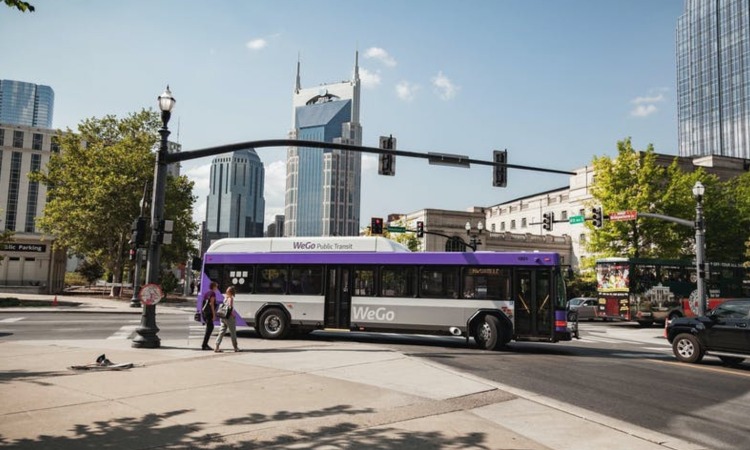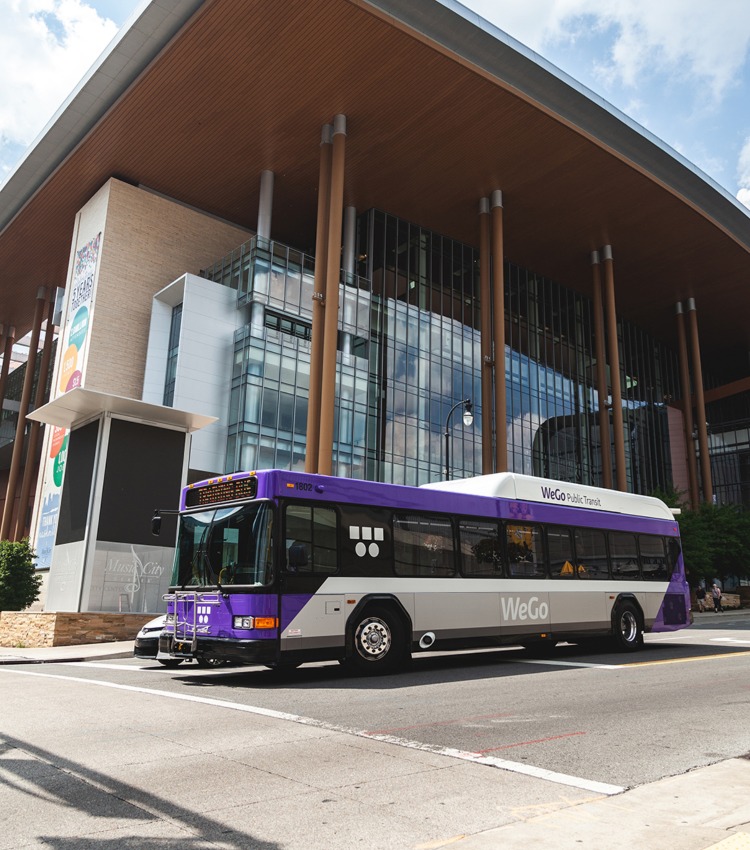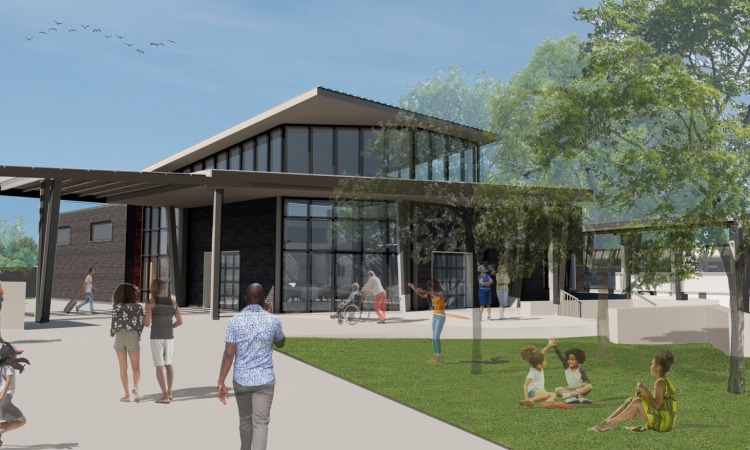Getting passengers back on-board: WeGo Public Transit’s road to recovery
- Like
- Digg
- Del
- Tumblr
- VKontakte
- Buffer
- Love This
- Odnoklassniki
- Meneame
- Blogger
- Amazon
- Yahoo Mail
- Gmail
- AOL
- Newsvine
- HackerNews
- Evernote
- MySpace
- Mail.ru
- Viadeo
- Line
- Comments
- Yummly
- SMS
- Viber
- Telegram
- Subscribe
- Skype
- Facebook Messenger
- Kakao
- LiveJournal
- Yammer
- Edgar
- Fintel
- Mix
- Instapaper
- Copy Link
Posted: 5 December 2022 | Trey Walker - WeGo Public Transit | No comments yet
For the latest instalment of Intelligent Transport’s exclusive COVID-19 recovery series, Trey Walker, Chief Development Officer for WeGo Public Transit, discusses how an expansion of service hours, new on-demand services and the opening of new transit centres has helped to increase public transport ridership, as well as how a lack of funding, in fact, preponed the start of WeGo’s ‘COVID story’.


Credit: WeGo Public Transit
At WeGo Public Transit, our goal is to connect people to their lives and their community. While Nashville is internationally known for our music and entertainment industry, highlighted by a vibrant downtown, the broader city is comprised of dozens of vibrant neighbourhoods, each with unique defining characteristics and residents with varying transportation needs. As the primary public transportation provider for Nashville and the middle Tennessee region, we provide service on 25 local bus routes, seven regional commuter-based bus routes, paratransit services and a 32-mile commuter rail line. Overall, we strive to provide exceptional, reliable and safe transportation options, while being a trusted community partner across Nashville’s neighbourhoods and providing responsible stewardship over our resources.
COVID-19 response
Our ‘COVID story’ begins approximately eight months before the onset of the pandemic in March 2020. Nashville is one of the largest metropolitan areas in the U.S. without a dedicated funding source for transit. Each year, our budget is largely established by the city’s budget appropriations that balances many important priorities, such as education, public safety and transportation.
Our response focused on the safety of our passengers and the safety of our employees. For our passengers, we implemented disinfecting protocols at our facilities… For our employees, we installed drivers’ barricades on our buses”
In Summer 2019, due to financial constraints city-wide, WeGo instituted an approximately 10 per cent service cut, which took effect in October 2019. While we never want to reduce service, these cuts were generally applied to our most unproductive routes that are often associated with duplicative service options, particularly in the urban core of Nashville. Through this process, we were able to minimise impacts to customers relying on our service and only witnessed a two per cent drop in ridership corresponding to these service cuts. The rather ‘lean’ nature of our service network heading into the pandemic influenced our response and focused our service improvements on extending service span, improving service frequency and improving access to our network.
When March 2020 arrived and COVID-19 became prevalent in our community, our response focused on the safety of our passengers and the safety of our employees. For our passengers, we implemented disinfecting protocols at our facilities, started end-of-line disinfecting on buses and improved our air filtration systems. For our employees, we installed drivers’ barricades on our buses, allowed at-risk employees to utilise leave and shifted to a four-day work week to limit exposure. As a result of these measures, we cut back service levels to approximately 75 per cent of pre-pandemic levels and focused service on corridors with transit dependent populations. During the initial onset of the pandemic, with travel limited to essential trips, ridership levels were at about 40 per cent compared to pre-pandemic.


Credit: WeGo Public Transit
Building back service
Currently, overall ridership is approaching 90 per cent of pre-pandemic levels and still climbing”
Our efforts to safely regain ridership began with travel pattern observations during the spring and summer of 2020. With service hours limited and commute patterns altered, we noticed that a larger share of riders were utilising the service during off-peak times and on weekends. We used operator reports of overcrowding to schedule targeted extra service throughout our network during high ridership hours. Those changes showed a demand for more trips along our major routes. Our passengers that needed transit to access employment or essential services were utilising our service at a higher rate compared to commuter-based services.
Our first expansion of service hours occurred in April 2021. Based on the data that we had gathered and discussions with our customers, we added service hours to improve frequency along our core network. With about 90 per cent of pre-pandemic service hours, we saw a boost in ridership to about 65 per cent of pre-pandemic levels. Since this change, we have been able to monitor travel patterns across the city and add service to respond to ridership trends. Our most recent changes have seen us implement service beyond pre-pandemic levels, while focusing on continued frequency improvements, later service on weekdays and an improved service span on weekends. Currently, overall ridership is approaching 90 per cent of pre-pandemic levels and still climbing. Ridership exceeds pre-pandemic levels on nights and weekends, as well as three of our four highest ridership routes.
These improvements were previously outlined in our service plans; however, by observing our ridership patterns and listening to our community partners, we were able to re-organise our priorities to fit the needs of our customers. With service improvements throughout our network, and a reduction in travel times, we’re also looking to improve our customer access to transit.
To further improve connections from more suburban parts of Nashville, we initiated a mobility on-demand programme in 2021″
About 25 per cent of Nashville residents live within a half-mile of 15-minute frequent transit services. In April 2022, we created a new route that connected our second highest ridership corridor to our fourth highest ridership route, with direct connections to healthcare, grocery and civic facilities. To further improve connections from more suburban parts of Nashville, we initiated a mobility on-demand programme in 2021, with two initial zones. This programme utilised ride-hailing services to connect trips from suburban neighbourhoods to frequent transit corridors. The areas served through this programme represent communities that would otherwise be difficult to serve with traditional fixed-route services. In early 2022, we formally expanded the programme to include four additional zones, introducing access to transit to about 18 per cent of Nashvillians.


Credit: WeGo Public Transit
Making projects a value-add to our customers
Improving our customer experience doesn’t stop with our service design, but extends to our capital projects. One of our strategic goals as an agency is to improve connectivity throughout our network by establishing neighbourhood transit centres and reducing the need for downtown transfers.
One of our strategic goals as an agency is to improve connectivity throughout our network by establishing neighbourhood transit centres and reducing the need for downtown transfers”
In March 2022, we opened our first neighbourhood transit centre, which connects two routes at an end-of-line station. The project was developed in close co-ordination with our public school system (which provided the property) and our local Department of Transportation. The project serves a high school area and directly connects several growing neighbourhoods without the need for a downtown transfer. Since the opening of the facility in March 2022, we’ve witnessed 37 per cent and 55 per cent ridership growth on the respective routes serving the centre.
Our second neighbourhood transit centre is now under construction in north Nashville. Opening in Spring 2024, this project will connect seven routes within our system across the highest transit-dependent areas of Nashville. Once completed, the centre will provide access to over 100,000 additional employment opportunities within a 45-minute commute, compared to pre-construction service levels. The project represents a significant investment for Nashville in a historically underserved community.
In order to establish public trust, the project team undertook a significant community engagement effort during the pandemic to reach neighbours through in-person and digital outlets. A broad-based community survey tool was combined with several dozen individual and small group stakeholder meetings to generate a design complimentary to the surrounding neighbourhood. Through this process, an advisory council of community leaders was formed to highlight opportunities to recognise the history and culture of the community into the design of the project.
Ultimately, the project will reflect the past, present and future of the surrounding neighbourhood, with a historical curation and artistic elements. In addition, the name of the facility, Dr. Ernest Rip Patton, Jr. North Nashville Transit Center, honours a civil rights icon from the community. Thus, the project exemplifies the ability to combine a neighbourhood’s history and culture, while improving transit service to serve members of the community.
Finally, WeGo is providing better value to our customers through a new fare payment system. QuickTicket, which launched in 2021, provides riders with an account-based system that can be accessed via many mediums, including the use of a smartphone. The system has an open-architecture digital platform, with the hopes of expanding utility to other city civil services. WeGo also implemented fare-capping for daily and monthly fares in 2021, ensuring that passengers receive the best value for their transit utilisation.
Going forward
There is no doubt that the pandemic presented challenges to WeGo as we attempted to initially maintain and then improve our services for our customers. There are still some areas of our service that are struggling to rebound, namely our regional commuter-based services. However, our team’s dedication to our community, through the operation of reliable and safe transit services, combined with customer-focused implementation of capital projects, has brought WeGo public transit close to 90 per cent of our pre-pandemic ridership. As we look to the future, our improvements will continue to focus on value added for our customers.


Related topics
Accessibility, COVID-19, Fleet Management & Maintenance, Getting Passengers Back On-Board: Transport's Road to Recovery Series, Mobility Services, Multimodality, On-Demand Transport, Passenger Experience, Public Transport, Ticketing & Payments
Related modes
Bus & Coach, Rail
Related cities
Nashville
Related countries
United States
Related organisations
WeGo Public Transit
Related people
Trey Walker








